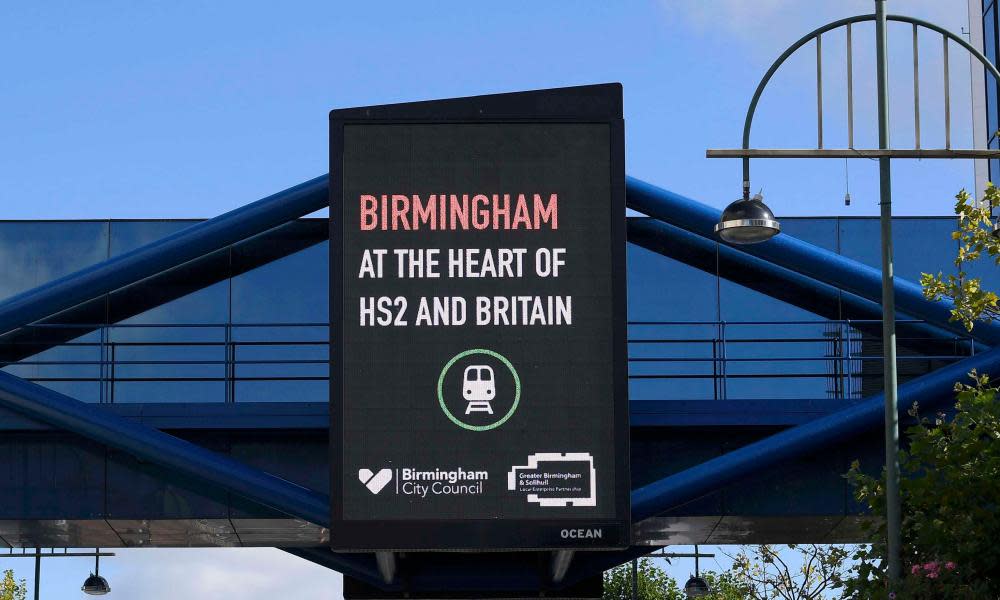What is HS2 and how much will it cost?

What is HS2 and how much will it cost?
High-Speed 2 is the planned rail network between London, the West Midlands and the North. The first phase will link the capital to Birmingham, while the Y-shaped second phase will link Crewe to Manchester and the West Midlands to Leeds. By the time both phases are finished in 2033 there will be 350 miles of new track.
After more than three years of debate in parliament, the HS2 bill gained royal assent on 23 February. Construction of the first phase can now start, and it is due to open in 2026.
The official total cost for HS2, as set out in the 2015 spending review, is £55.7bn, which, according to the government, is value for money. The government claims [pdf] that every £1 invested in HS2 will deliver benefits worth more than £2.50 to the UK economy: a total of more than £103bn.
Many commentators are less convinced, raising concern about growing costs and casting doubt on the government’s official figures. In June 2016, the National Audit Office noted that the first phase of HS2 was set to cost £27.4bn, £204m over budget, and said that the £55.7bn funding package “does not cover funding for all the activity needed to deliver the promised growth and regeneration benefits which is the responsibility of local authorities”.
HS2 will provide a huge boost for engineering, generating £8.6bn of major civil engineering deals. The competition for the West Coast Partnership franchise is now under way. Bidders so far include a consortium of Virgin, Stagecoach and SNCF consortium against First Group and the Italian state-owned Trenitalia.
How fast will HS2 actually be?
Up to 250mph, on trains that will seat up to 1,100 people. The government claims [pdf] that once HS2 is complete, it will take 67 minutes to travel from London to Manchester, instead of the current 127, and the journey time from London to Glasgow will be reduced from 271 minutes to 220.
Why does Britain need more railways?
Overcrowded trains. It’s been more than 100 years since the UK built a new rail line north of London. In 1994–95, 785m rail journeys were made each year, and this has now increased to 1.69bn according to the government [pdf].
The government says that if the number of journeys increases [pdf] by 3.7% a year, by 2033 more than 3,000 people would have to stand on trains leaving London on the West Coast mainline during evening rush hour, and 40% would be standing for more than an hour.
The idea is that HS2 will support the northern powerhouse and Midlands engine developments.
What new stations are planned?
The first phase includes a revamp and expansion of Euston, and there will be a new Old Oak Common station in west London as well as Birmingham Curzon and Birmingham Interchange. The wider aim for Euston is to regenerate the area, similar to the redevelopment of King’s Cross and St Pancras, and HS2 started looking for architects, designers and developers for the project in April.
New stations at Manchester Piccadilly and Manchester Airport are planned for phase two.
What about people who live near the planned rail routes? Will they get any compensation?
Yes. It depends on how close they live to the route and there are various options, including selling their property to the government for its market value (as if HS2 wasn’t going to be built). The government will also give people who qualify up to £58,000 in cash and cover the cost of moving, such as stamp duty.
But HS2 has been accused of trying to brainwash children who will be most affected by the proposed route, after it awarded a £280,000 contract to a consultant to develop a primary school education programme.
This is a huge project. What about environmental concerns?
In 2015, Patrick Barkham walked the planned phase one route, meeting people whose lives would be affected by the rail line. “To many residents, HS2 has come to symbolise a country run against the interests of the many and in the interests of the few,” he wrote, as their opposition became clear.
Last year, a report commissioned by the HS2 Action Alliance found that reducing the speed of the trains would have a massive impact in cutting CO2 emissions and noise, and in February, as the bill for phase one was passed, HS2 chair David Higgins said the organisation was “committed to mitigating the environmental impacts”.
Does HS2 have anything to do with Crossrail?
Crossrail – to be known as the Elizabeth line when it opens in 2018 – is the railway running through London from Reading and Heathrow to Shenfield in Essex via tube stations including Paddington and Bond Street. The idea is for HS2 to meet Crossrail at a new Old Oak Common station in west London when it opens in 2026, if all goes to plan.
Is there a HS1?
Yes – the lines that run between London St Pancras, Stratford International, Ebbsfleet International and Ashford International are operated by HS1, and connect London to the Channel Tunnel.
Sign up for your free Guardian Public Leaders newsletter with comment and sector views sent direct to you every Thursday. Follow us: @Guardianpublic

 Yahoo News
Yahoo News 
